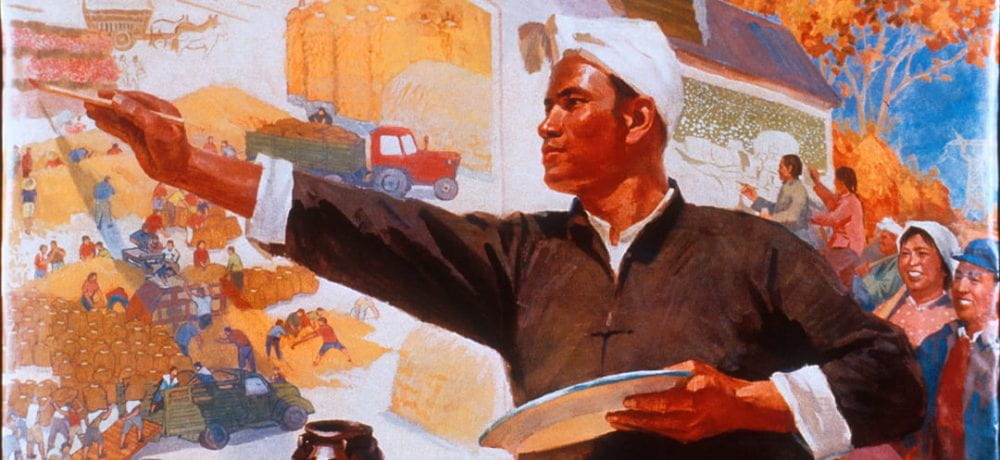
Shepherds, 1980, oil painting on wood, 79 x 52 cm
Source: artnet.com (http://www.artnet.com/artists/chen-danqing/shepherds-_c5BgdZT-kKaTTzQ7Yajhw2)
This painting done by Chen is typical of his depictions of the Tibetan people in the Tibetan Plateau of China’s far west. The individuals are draped in traditional Tibetan garb, representing their preservation of traditional culture in an increasingly homogeneous China. This work is typical of Chen’s style, emphasizing the need to depict the truth in life, not to be convoluted by adding superfluous detail to beautify the image. As put by Lu Peng, “their [Chen Danqing] works often reflect their personalities and their visual experience of growing up during the Cultural Revolution… which propelled these artists to become stronger, more creative, and powerful” (Lum 2010, 91). The difficulty of living through a period such as the Cultural Revolution inevitably shaped the way the artist perceives his surroundings, particularly the emphasis on life’s harsh reality.
What is most notable about Chen’s paintings is the light in which he depicts the Tibetan people, one of China’s 56 zus, ethnicities. Often depicted in public discourse as an unruly and subversive ethnic group due to confrontations with Beijing, Chen portrays Tibetans in a refreshingly normal manner, portraying “ordinary life with utterly non-dramatic and non-literary themes” (Lu 2010, 757). He paints them in a style as he would paint a member of the Han ethnicity. Furthermore, he portrays the man in the image attempting to kiss the woman, appearing to smile in what could be identified as pleasure. To contrast the mainstream narrative regarding the subversiveness of Tibetan people, Chen portrays the humane nature of the two subjects in a style that emphasizes the normality of their lives and culture.
The piece is done as oil on wood, depicting the earthy tones of the sparsely populated endless grasslands and unruly terrain of the Plateau. The shirt of the woman contrasts with the earthy tone primarily featured, complemented by her colorful necklace, a typical accessory in Tibetan culture. The wool coat adorned by the man, assembled from the wool of the sheep which he cares for, shows the harmony between his profession and nature, both of which require mutual respect for bounty and health. The ardent realism portrayed in the Sheepherder serves not only as a medium for Chen to portray the Tibetan people in a realist light, but also a means to explore the way in which they understand the relationship between earth and man.
Peng, Lu. “Scar Art and the Life-Stream.” In A History of Art in 20th Century China, 757-780. Milano: Edizioni Charta Srl, 2010.
Lum, Ken. “Zhang Shengtian and Hank Bull in Conversation.” Yishu: Journal of Contemporary Chinese Art, 91. Volume 8, Number 1, January 2009.


I enjoyed reading about your piece. I think it was valuable how you talk about the traditional depictions done by your artist. I will have to add more information about my artists lack of traditional work since portrayed in his pieces. Although my artist does not create “traditional” Chinese art pieces he does include some traditional parts like the individuals draped in traditional Tibetan garb in your artists piece.